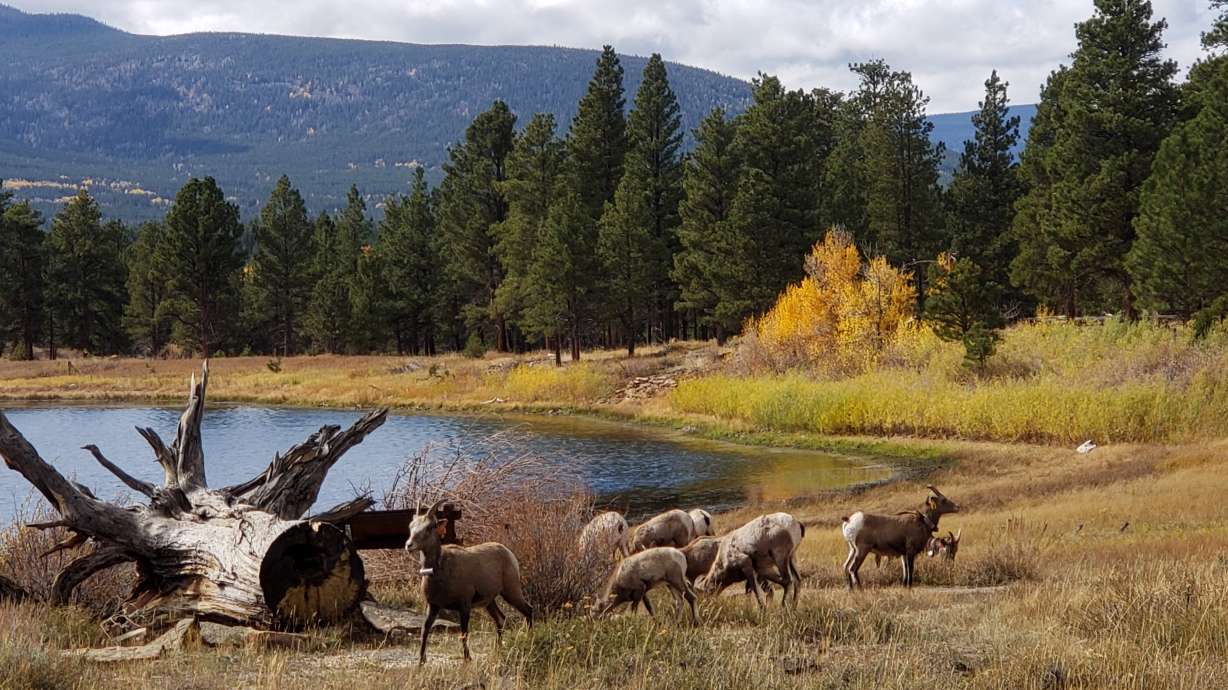Estimated read time: 3-4 minutes
This archived news story is available only for your personal, non-commercial use. Information in the story may be outdated or superseded by additional information. Reading or replaying the story in its archived form does not constitute a republication of the story.
SALT LAKE CITY — Yet another record related to Utah's great outdoors has fallen.
The Utah Division of Wildlife Resources reports that $4.2 million was raised for conservation projects this year during the state's annual conservation permit project funding meeting held last week. It's the most raised since the Utah Conservation Permit Program was established 42 years ago.
The money generated will go toward projects that benefit Utah's natural landscape and wildlife habitats. And it couldn't come at a more apt time since there's a record number of requested conservation projects, said Tyler Thompson, the Watershed Restoration Initiative Program for the Utah Department of Natural Resources.
The Utah Conservation Permit Program first began in 1980. Wildlife sports conservation groups, like the Mule Deer Foundation or the Rocky Mountain Elk Foundation, receive rare permits that are typically difficult to find, which they auction off. There's also money generated from expositions, based on $5 drawings. About 60% of the money funds conservation projects, 30% goes toward research projects, while the rest goes back to paying for the administrative costs.
It's generated tens of millions of dollars over the past two decades alone. Rep. Casey Snider, R-Paradise, who sponsored a bill related to transparency of the program's funds, called it "one of the significant success stories" in terms of funding Utah conservation.
The state then launched the Watershed Restoration Initiative Program in 2006, which takes in watershed health and biological diversity projects across the state. The money from the permits then goes to approved projects from the program.
This year's conservation permit funding success seems to align with all the other outdoor recreation records broken over the past two years, from visiting parks to hunting and fishing. All of the outdoor interest, Thompson figures, comes from the growing desire to go outdoors, especially after the past two years of the COVID-19 pandemic.
"I think now that COVID restrictions are kind of going away and people are really wanting to get outdoors — I think there's a lot of people who saved up a whole bunch of vacation time and saved up a whole bunch of funding in regard to what they usually spend on outdoor recreation activities, and those funds are starting to be spent now," he said. "That $4.2 million really does show you how well those permits are selling, and they're selling for a larger amount than what we've seen in the past."
The record interest in the outdoors comes with a record need to keep up not just with visitation but other issues. Most of the needs in Utah at the moment are watershed and wildlife habitat restoration all over the state, which are also related to the statewide drought. These include projects that improve water quality and quantity or reduce fire danger. There's a mixture of other conservation ideas that get considered every year, too.
The total cost of the proposed projects he's received this year is over $75 million, about $25 million above normal, Thompson said.
During a meeting last week, the Division of Wildlife Resources received partial or full funding for 80 different projects. A habitat improvement project for the Henry Mountains in southeast Utah received the most money at $250,000.
However, Thompson contends all of the projects in recent years have benefited the state's outdoors in one way or another.
"It's pretty hard to drive around the state and not see a footprint of the program," he said. "Basically, every time you see any management activity on the mountains or down in the valleys in the right terrain areas, a lot of those are tied to the WRI program."









